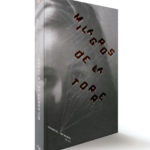
About the series
Untitled (Hanger, Stocking,..) was made during the same period of time and using the same technique as the series Under the Black Sun but its attention is directed to a feminine subject matter. The pieces of clothing are presented as inverted negative images and they appear unresolved and open, without any obvious conclusion or definition. The intimate narrow format, delimited by photo corners, presents a sequence that starts with an empty hanger and finishes with a hand leaving the frame.
Sobre la serie
Sin titulo (Colgador, Media,..) fue realizada durante el mismo tiempo y empleando la misma técnica de la serie Bajo el sol negro, salvo que en este caso se dirige la atención a una temática femenina. Las piezas de vestir son presentadas en imágenes invertidas en negativo, apareciendo no resueltas, sin una conclusión obvia o definición precisa. El formato íntimo y angosto, delimitado por esquineros de fotografías, presenta una secuencia que comienza con un colgador vacío y termina con una mano saliendo del encuadre.
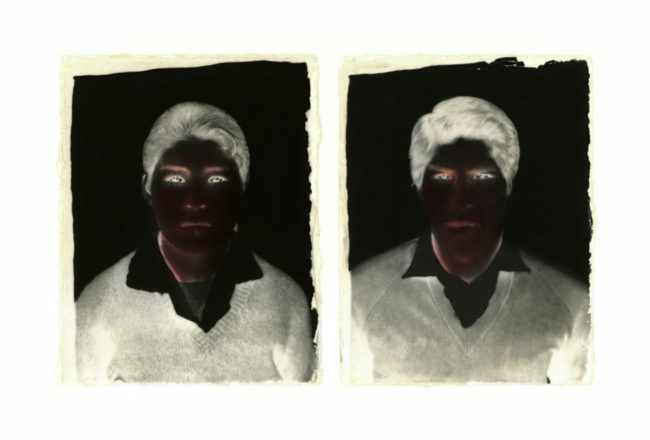

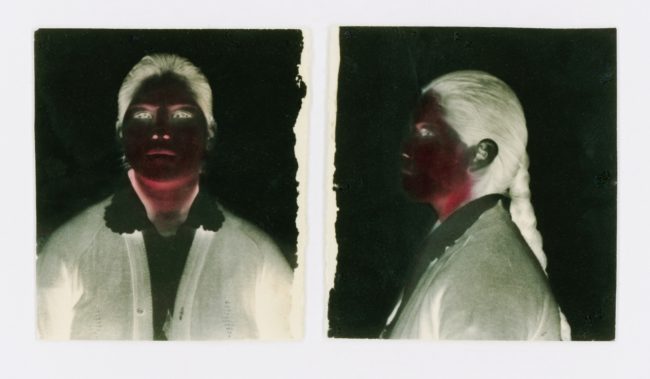

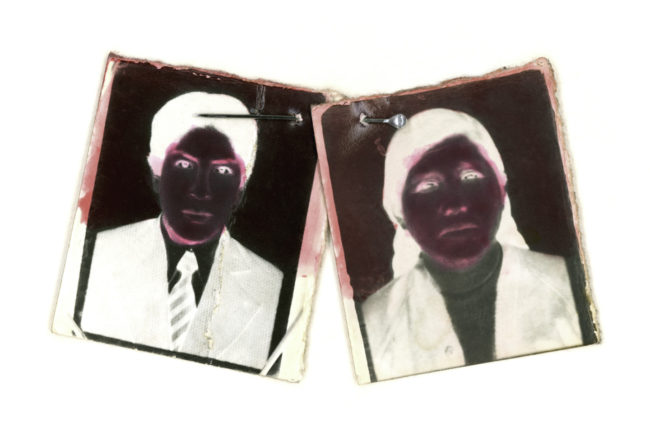

About the series
Under the Black Sun references the rudimentary technique used by street photographers in Cuzco, Peru, whose expertise was to produce ID photographs within minutes. The technique started to disappear as the digital era approached. The photographs were taken directly onto photographic paper with a custom-made wooden camera. The exposed paper was developed inside the camera and as the negative was removed to dry, a layer of Mercurochrome was automatically applied to the skin of the subject. This red hand-painted negative was then re-photographed to produce the classic ID photo.
The harmless retouching with Mercurochrome served as a filter which lightened the skin of the subject, conferring not only a ‘racial enhancement’, but also a socio-economic, aesthetic and cultural one, with the belief – of colonial origin – that a person with fair skin possesses all these qualities intrinsically.
These ideas are questioned in Under the Black Sun, as the process is suspended in the middle, unresolved, during the negative stage, with the red veil of applied ‘medicine’ still covering the face of the subject.
The work also questions how through its own technical essence, the authority of photography as a register is destabilized.
Sobre la serie
Bajo el sol negro está basado en la técnica rudimentaria del fotógrafo de plaza de la ciudad de Cuzco, Perú, cuyo trabajo principal era tomar las fotografías ‘carnet’ o de identificación en escasos minutos. La técnica comenzó a desaparecer con el comienzo de la fotografía digital. Las fotografías eran tomadas directamente sobre papel fotográfico a través de una cámara de cajón. El fotógrafo revelaba el papel expuesto dentro de la misma cámara y luego al sacar el negativo aplicaba automáticamente una capa de mercurio cromo sobre la piel del retratado. Este negativo en papel con el retoque rojo era nuevamente fotografiado para conseguir la clásica foto carnet.
El inocente retoque aclara la piel del retratado, confiriéndole así no solo un ‘mejoramiento racial’, sino también estético, socio-económico y cultural; esto último bajo la creencia – de origen colonial – que una persona de piel blanca representa intrínsecamente todas esas cualidades.
En Bajo el sol negro se cuestionan esas ideas, dejando el proceso suspendido a la mitad, en negativo, cuando el fotografiado lleva todavía el velo rojo de la medicina sobre el rostro. El trabajo también cuestiona cómo a través de la esencia de su propia técnica, se desestabiliza la autoridad de la fotografía como registro.
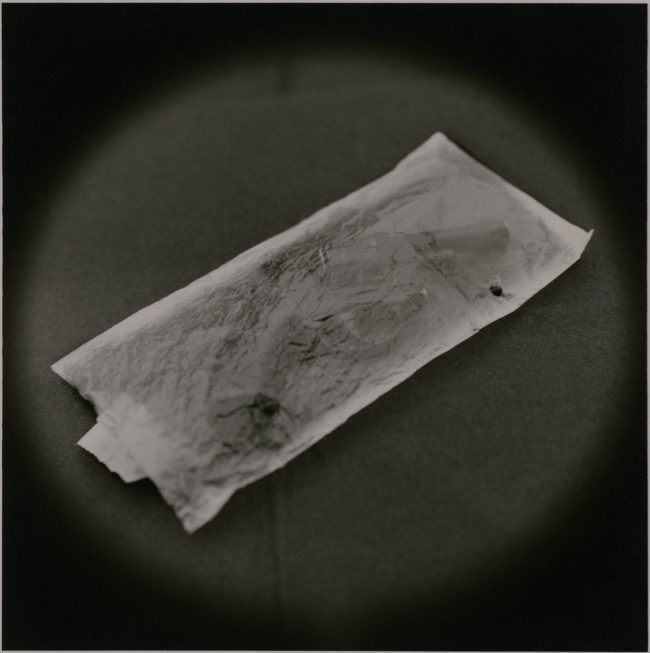

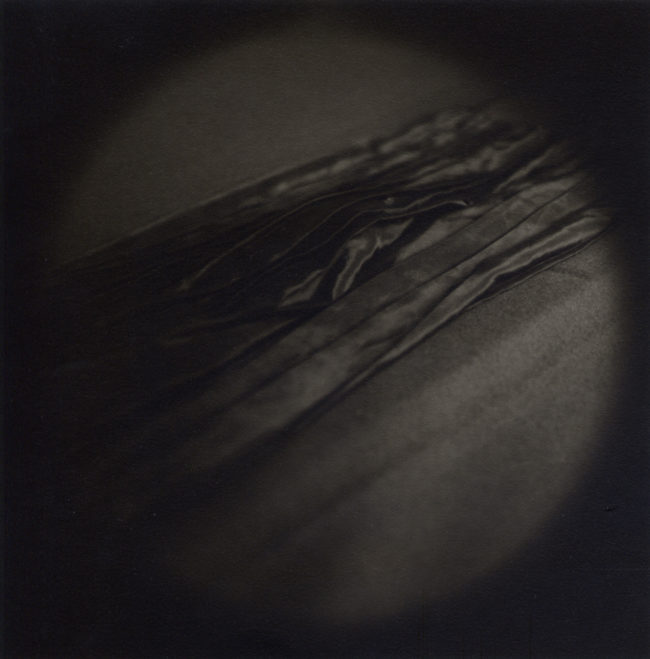

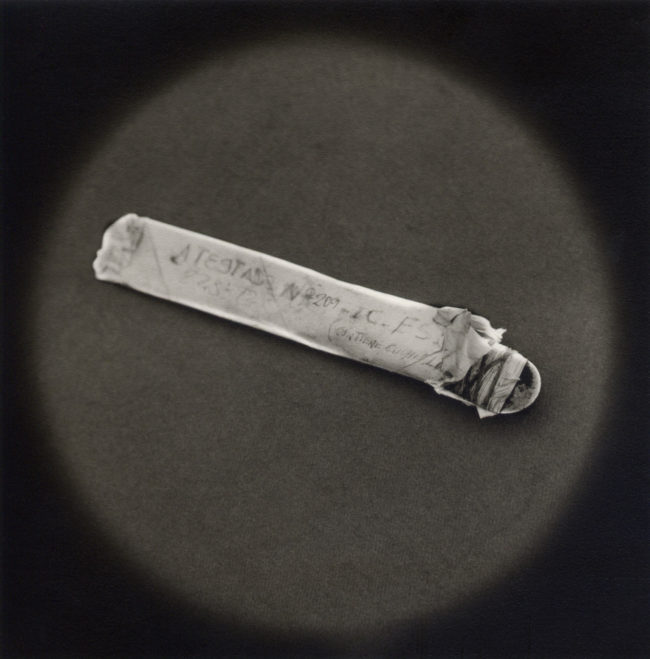

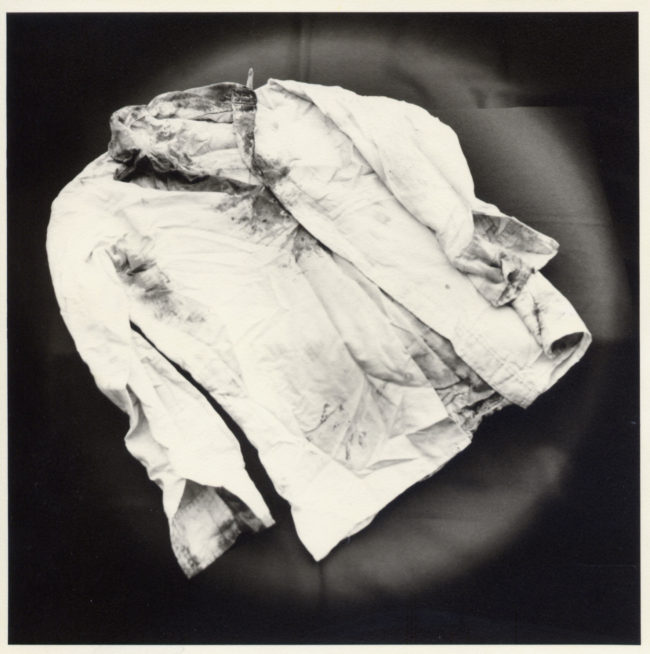

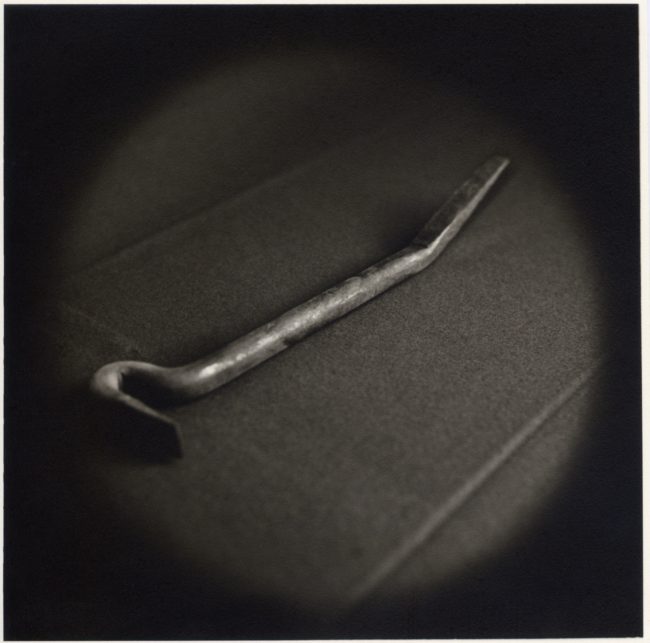

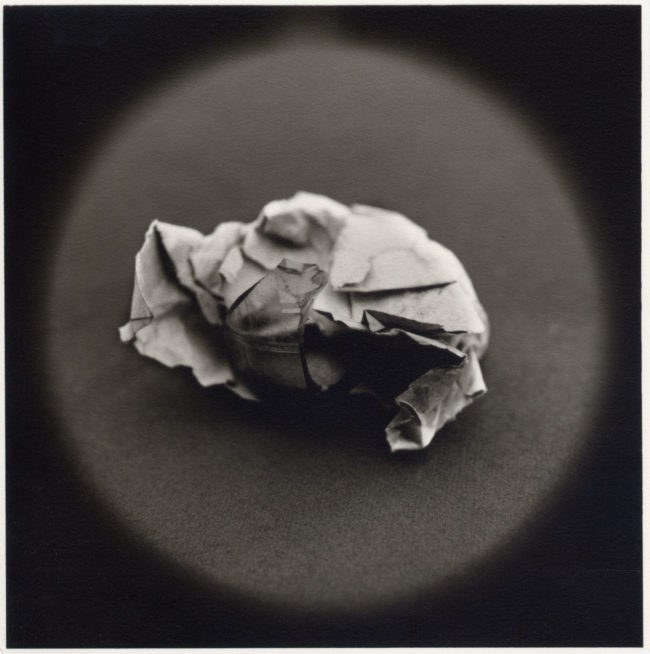

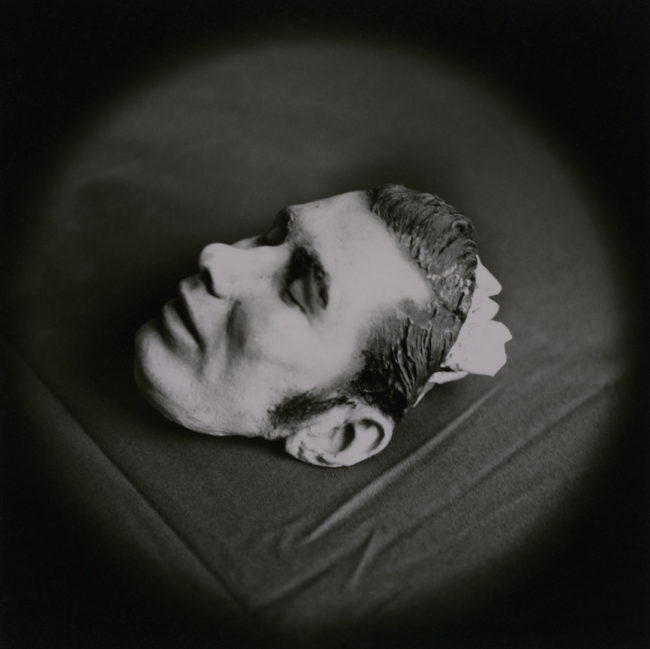

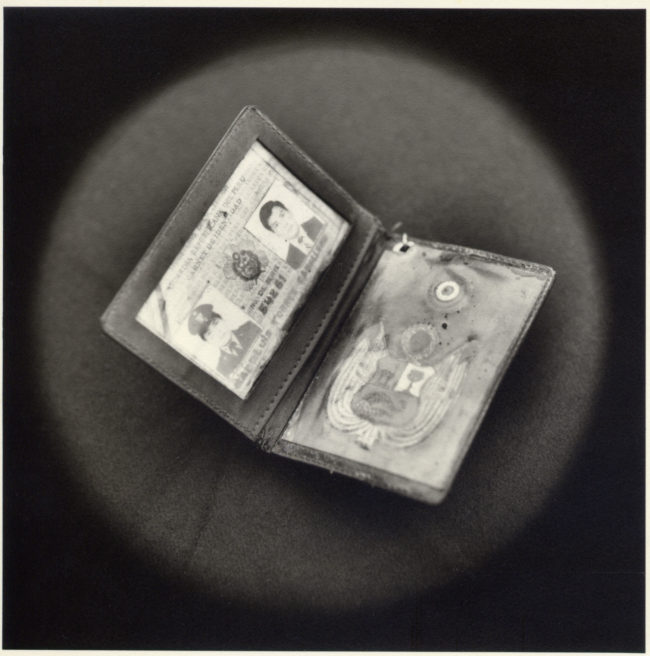

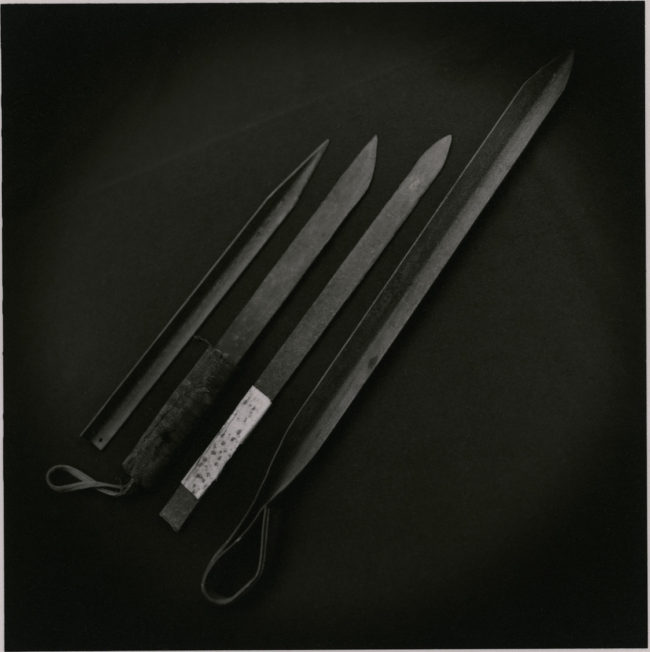

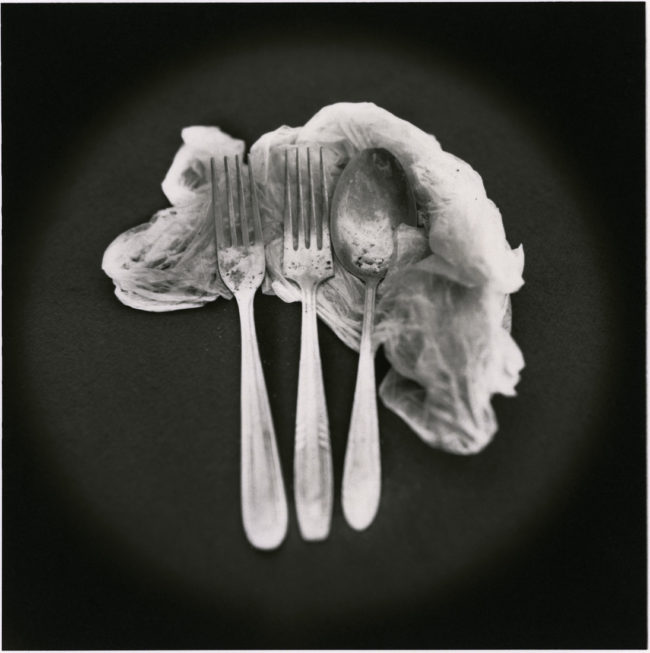

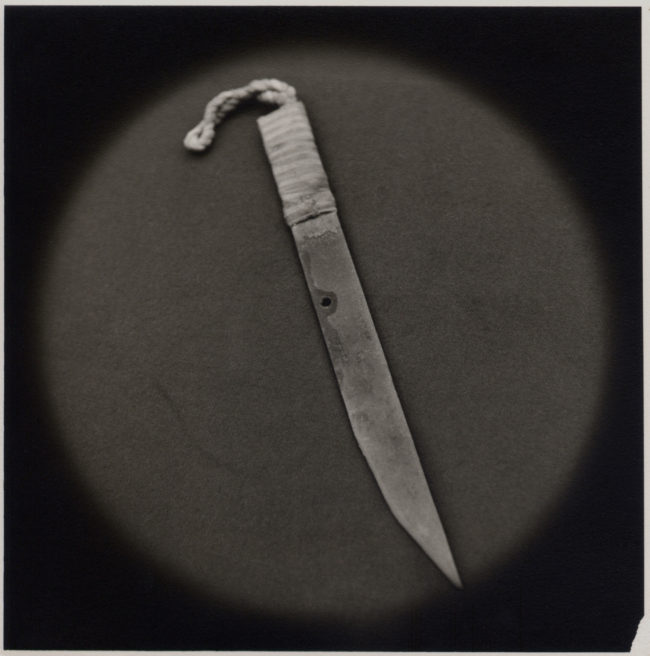





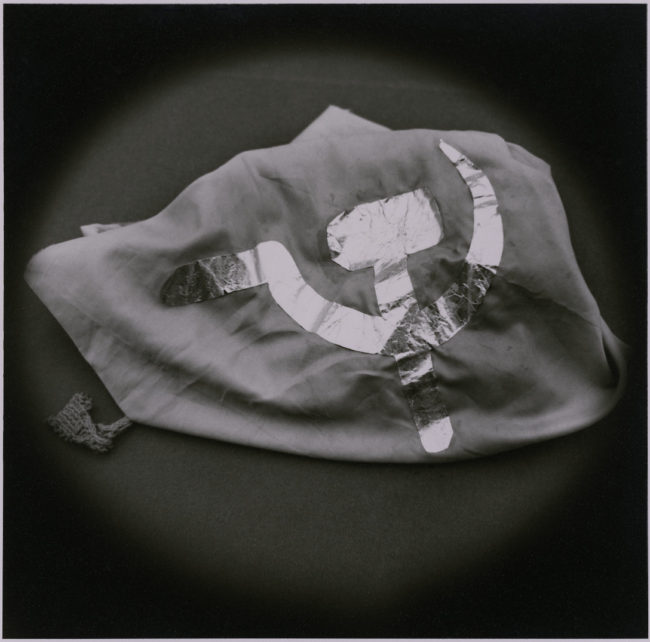

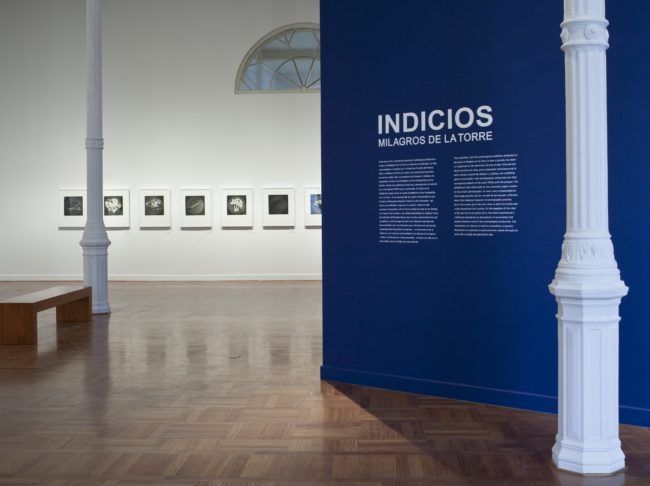

About the series
The Lost steps draw from a process common in the nineteenth century, when the development of the optical lens was still unable to entirely cover the format of the image. This technical limitation creates a dark aura around the photographed object and gives it a limited depth of field, concentrating our attention to one single detail. A concise text below each work, modeled after judicial language used by law enforcement, uncovers the object’s circumstances.
The works comprise forensic evidence from terrorism trials, crimes of passion, cocaine production, victims’ clothing and makeshift weapons. The objects’ innocuous origins contrast with their incriminatory testimonies.
The series was made in the Evidence archives of the Courthouse in Lima, Peru.
Sobre la serie
Los pasos perdidos se origina de un proceso común del siglo diecinueve, cuando el desarrollo del lente óptico todavía no era capaz de cubrir el formato de la imagen. Esta limitación técnica crea un aura oscura alrededor del objeto fotografiado y le da un limitado campo de profundidad, concentrando nuestra atención a sólo un detalle. Un texto conciso bajo cada pieza, basado en lenguaje judicial usado por agentes, denuncia las circunstancias del objeto.
Las piezas presentan evidencias forénsicas de juicios de terrorismo, homicidios pasionales, ropa de víctimas y armas improvisadas. Los objetos de origen común contrastan con sus testimonios incriminatorios.
La serie fue realizada en los archivos del cuerpo del delito del Palacio de Justicia en Lima, Perú.
About the series
Left Blank was researched at the archive of the Museo dell’Emigrante in the Republic of San Marino. It deals with the pages ‘left blank’ in the census books of the late nineteenth and early twentieth century, when the great wave of immigration to the Americas took place. These pages remain an empty record of the names, addresses, and trades of family members who had emigrated to America, in the hope that they would return one day soon and be part of the population demographics.
The images’ lack of signs convey the idea of absence and loss.
The work is installed in a closed space, with two large format photographs placed on white shelves along each wall, giving an impression of emptiness within the room.
Sobre la serie
En blanco fue investigado en el archivo del Museo del Inmigrante del Estado de San Marino. Comprende imágenes de los libros de censos poblacionales de finales de siglo XIX y principios del siglo XX, época en la que se da una gran ola de migración a las Américas. Éstas páginas fueron dejadas en blanco, es decir, no se registraron los nombres, domicilios y oficios de las personas que habían inmigrado, con la esperanza que, algún día cercano, volvieran y el empadronamiento pudiera realizarse.
Las imágenes están marcadas por una ausencia de signos; que promueven la idea de ausencia y pérdida.
Este trabajo es instalado en un espacio cerrado, donde en cada una de las paredes se instalan dos fotografías de gran formato sobre repisas blancas, dando una impresión de vacío dentro del espacio.
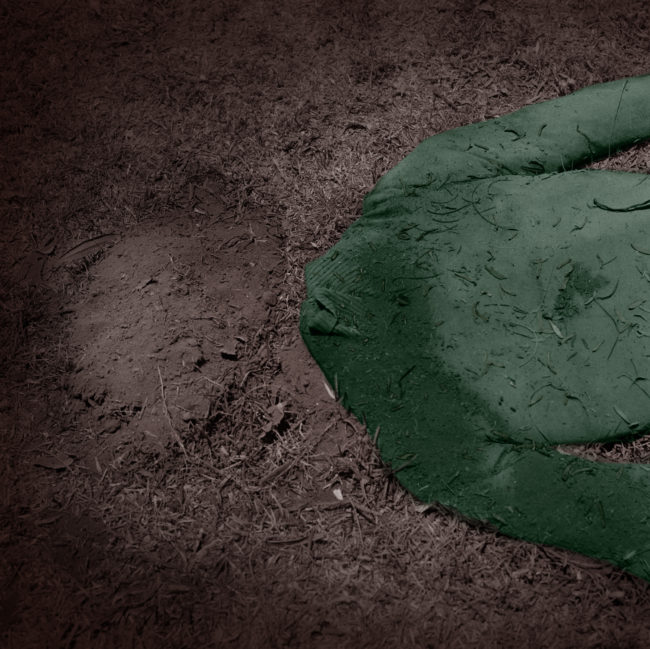

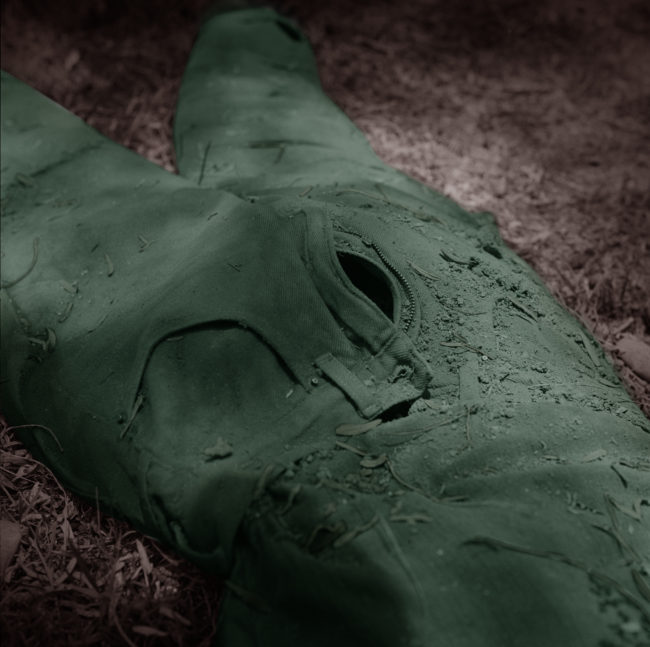

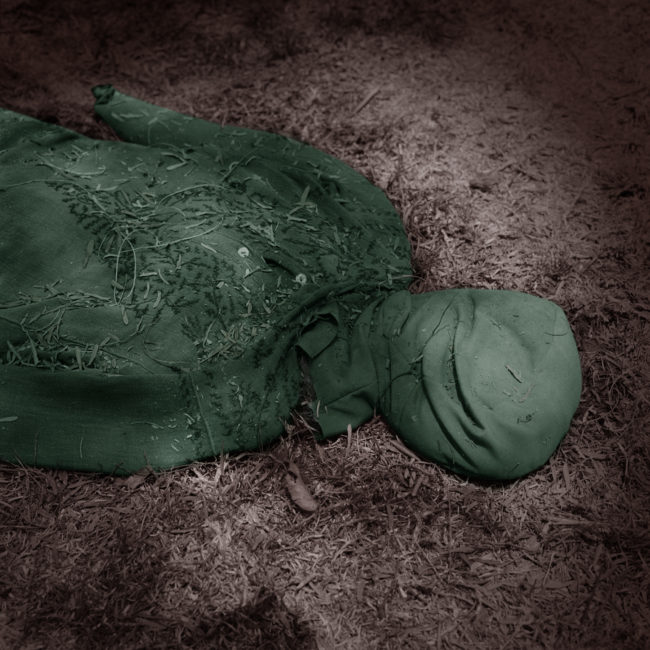

About the series
Untitled (The disappeared) is a large-format triptych of images with a limited color palette of dark brown and green tones that exposes garments in deterioration. Seen in unison, they resemble geographical maps. The work denotes physical fragility and evokes a crime scene. It references the phenomenon of forced disappearances suffered during Latin American dictatorships that unfortunately, are still current and relevant in troubled nations worldwide.
Sobre la serie
Sin Título (Los desaparecidos) es un tríptico de fotografías en gran formato que utiliza una paleta de color limitado al verde y al marrón oscuro exclusivamente. Visto en conjunto, se asemeja a mapas geográficos. El trabajo denota fragilidad física y evoca una escena de crímen. La pieza referencia el fenómeno de desapariciones forzadas sufrido durante dictaduras latinoamericanas que siguen vigentes y relevantes en naciones conflictivas muldialmente.
About the series
Censored was researched in the restricted section at the University of Salamanca’s library in Spain and it examines books – dating from XV to XVII C.- which were obliterated and repressed by the Spanish Inquisition.
The images combine subtle colors and subdued aggression; the beige of the cotton hand-made paper contrasts with the intense black of the censored passages. From a distance and due to its large format, the works could be mistaken for gestural paintings, but a closer examination reveals texts effaced by various interventions.
Tension arises when the viewer perceives, behind the tonal range and graphic appeal, the violence implicit in the images. The works stand as witnesses to the suppression of ideas by the powers of authority, which unfortunately continues to be relevant today.
Sobre la serie
Censurados fue una investigación realizada en la sección restringida de la Biblioteca de la Universidad de Salamanca, España y examina textos – del siglo XV al XVII- que fueron borrados y oprimidos durante la Inquisición Española.
Las imágenes combinan colores sútiles con una suave agresión; the beige del papel de algodón hecho a mano contrasta con el intenso negro de los párrafos censurados. Desde una distancia y gracias a su gran formato, los trabajos se podrían confundir con pinturas gestuales, pero una cercana examinación revela textos obliterados a través de diferentes intervenciones.
La tensión surge cuando el espectador percibe, que detrás de lo atractivo de las tonalidades y gráfica, existe una violencia implícita en las imágenes. Los trabajos son testigos de la supresión de ideas por el poder de las autoridades, que desafortunadamente continúa a ser relevante en nuestro presente.
About the series
Armored is a work of five interconnected images which presents, in the style of the classic ‘three-quarter’ portrait pose, the chronological evolution (1970-2000) and physical characteristics of armored vehicles. The small and intimate format brings the viewer physically close, generating a more comfortable relationship than one normally experiences when encountering one of these vehicles on the street. However, the first reaction, provoked by the high-caliber weapons of the people driving them, is simply to keep away, especially in Mexico City where the work was produced.
The piece, encyclopedic and taxonomical in nature, proposes a change in the perception of danger and prompts the avid observer in finding the differences between armored models.
The work also remarks on the implicit urban aggression within the city.
Sobre la serie
Blindados es una pieza de cinco fotografías en la que se presentan, a manera de ‘retrato clásico de perfil de tres cuartos’, la evolución cronológica (1970-200) de diferentes cualidades y características físicas del vehículo de transporte blindado. La impresión fotográfica de formato intimista llama al espectador a acercarse, generando una relación más confortable de observación a tales vehículos que la experimentada en las calles, donde la primera reacción es la de alejamiento, a causa de las armas de gran calibre que cargan sus custodios especialmente en la Ciudad de México donde el trabajo fue producido.
La pieza, enciclopédica y taxonómica en naturaleza, provocan un cambio de la percepción del peligro y propone que el observador atento se involucre en un juego de buscar diferencias entre los diferentes modelos de Blindados.
El trabajo comenta sobre la agresión urbana implícita en la ciudad.
About the series
Newborn explores human vision during the first three days after birth. Following research and consultations with specialists in the field, the first sights of a baby were interpreted and translated photographically, taking into account the angles of vision, focal distance, tonalities, colors and contrasts permitted by the baby’s evolving sight.
Since newborn babies continue developing their vision and do not ‘see’ like adults before eight months, they have different responses to the deliberate and meticulous observation of objects, to differentiating degrees of light and shade and to experiencing new sensations and reactions from visual stimuli that will finally determine their emotional and intellectual profile.
Sobre la serie
Recién nacido explora la percepción visual humana durante los primeros tres días de vida. Luego de una investigación basada en consultas a especialistas y bibliografía, las primeras visiones de un bebé fueron interpretadas y traducidas fotográficamente, tomando en cuenta el ángulo de visión, la distancia focal, las tonalidades, los colores y contrastes atribuidos a su desarrollo oftalmológico.
Considerando que un recién nacido sigue desarrollando su visión y no ‘ve’ como un adulto hasta los ocho meses de edad, existen diferentes respuestas a la observación detenida y minuciosa de objetos, diferenciando graduaciones de luz y oscuridad, experimentando nuevas sensaciones y reacciones ante estímulos visuales que determinaran su perfil afectivo e intelectual.
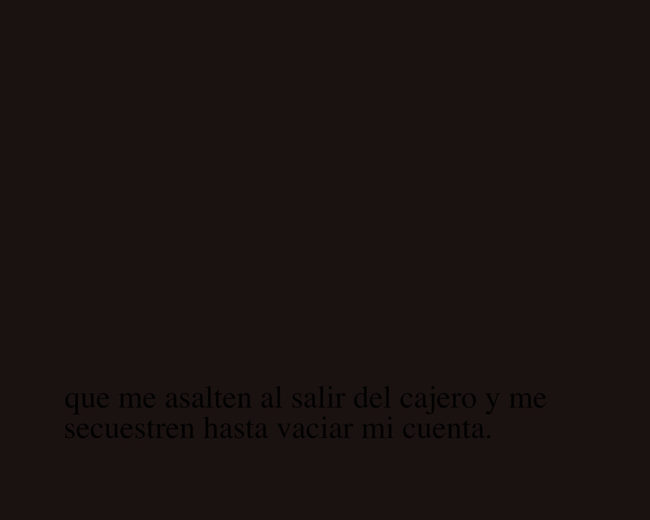

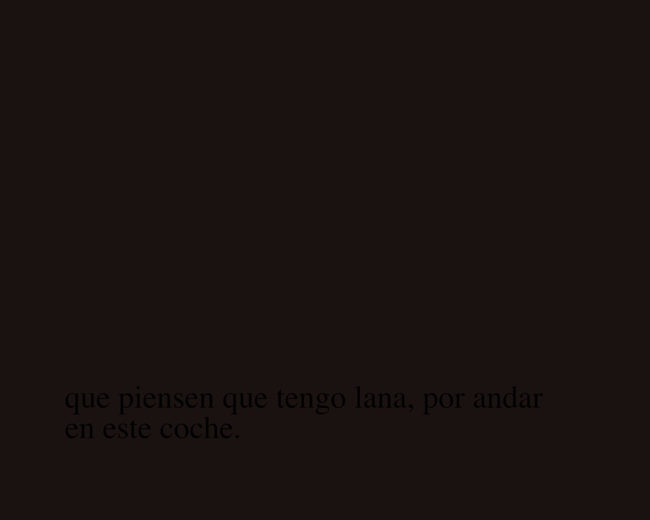



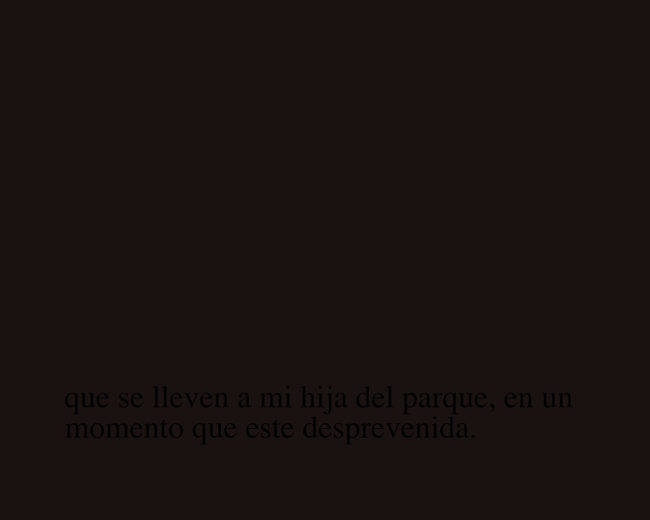

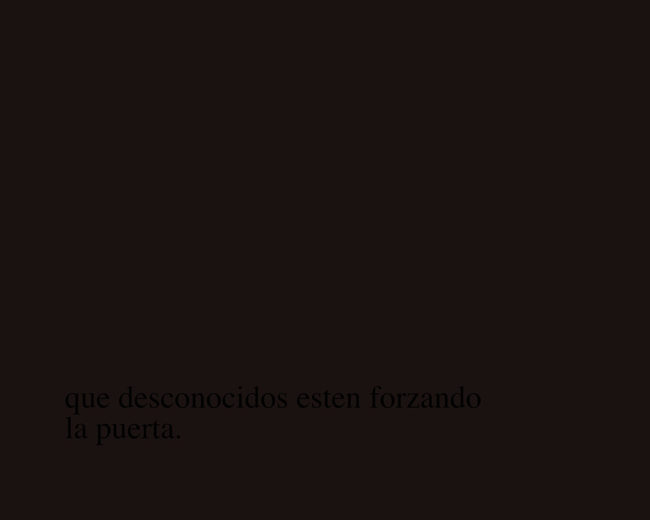

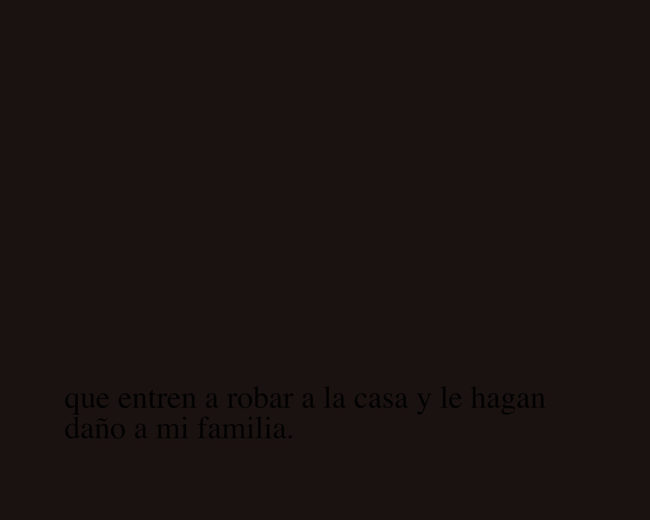

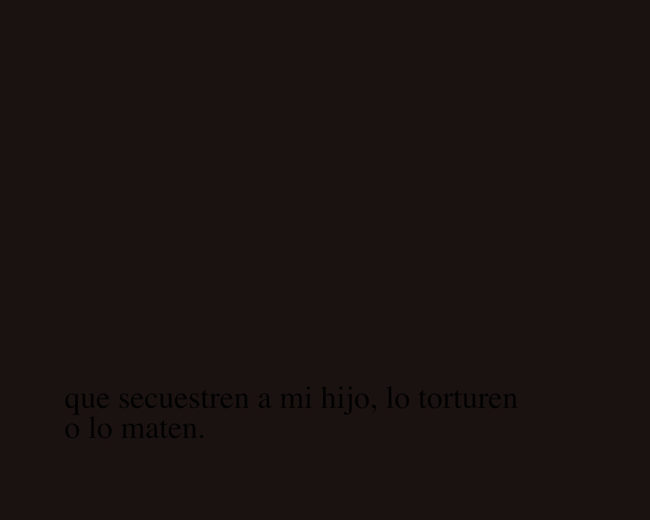

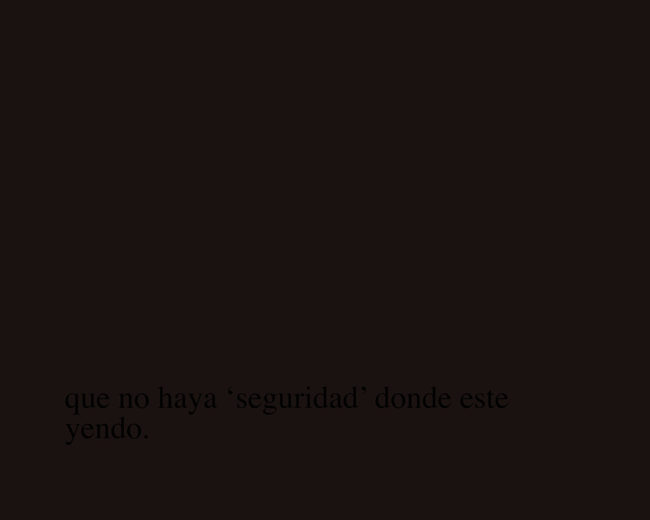

About the series
Fears is based on a survey carried out among residents of Mexico City to the question: What are you afraid of? It focuses on the interior dialogues we all experiment, on the words we say to ourselves, on unspoken anxieties.
The pieces are presented as rectangular monochromes of dark brown, analog to the the color we see when we first close our eyes, and its format is that of our peripheral vision. These monochromes reflect the mental space, the texts at the bottom are almost imperceptible, unless the viewer moves up close to read them. The close stance of the viewer creates a play between their mirror-like reflection on the work, the reading of the texts and the viewer’s possible identification of their own fears.
Sobre la serie
Temores está basado en una encuesta realizada a los habitantes de la Ciudad de México a la pregunta: A qué tiene miedo? Centrado en los diálogos internos que todos experimentamos, en las palabras que oímos decirnos a nosotros mismos, en los miedos no exteriorizados.
Las piezas son presentadas como monocromos rectangulares de color café oscuro, análogo al primer color que vemos al cerrar los ojos, y el formato es el de nuestra visión periférica. Estos monocromos reflejan el espacio mental, los textos colocados en la parte inferior son casi imperceptibles, salvo cuando el espectador se acerca a leerlos. Este acercamiento crea un juego entre el reflejo ‘tipo espejo’ del espectador sobre la obra, la lectura de los sentimientos de temor comunicados por los textos y el reconocimiento de los propios miedos del espectador.
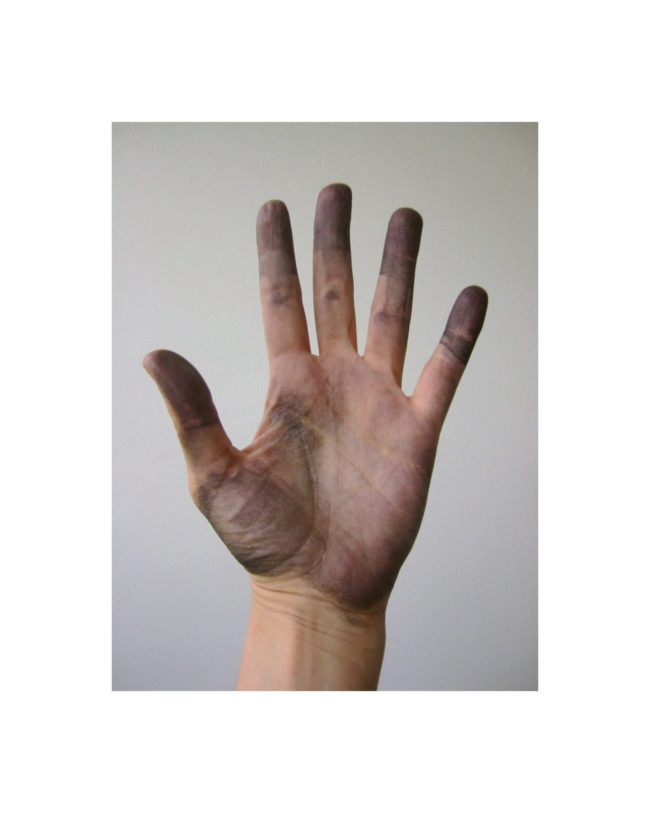

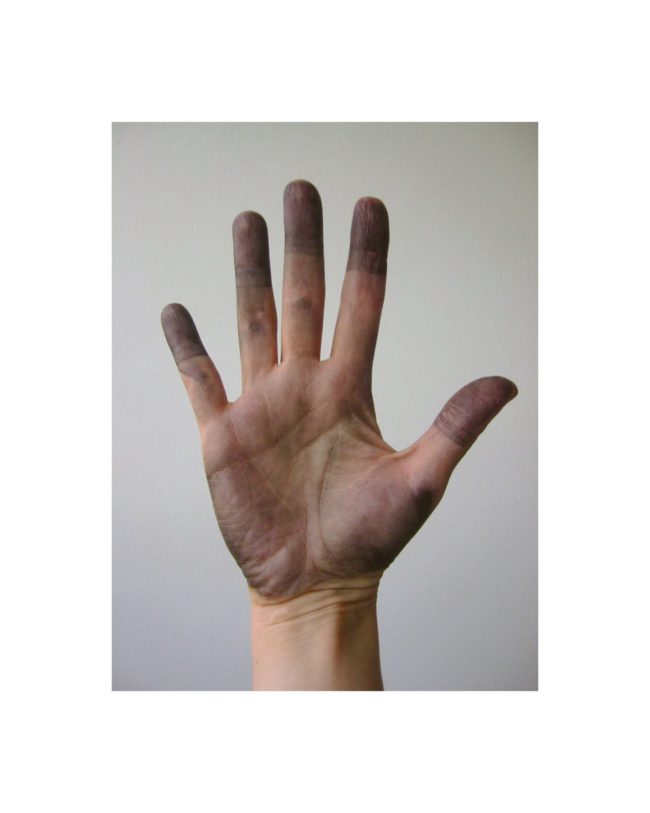

About the series
F.F. (the initials of Spanish dictator Francisco Franco) consists of large format black and white photographs of his personal objects, his pillow, his coat, etc. The work was produced in the archive of the Royal Palace of El Prado in Madrid and present close-up images in which the limited visual field brings out only a small detail clearly, leaving the rest to fade into out-of-focusness and abstraction.
The images have been manually ‘stained’ with sepia toner, which is a color that reminds us of photographs from last century or indeed old family photographs. The sepia strokes signal notions of effacement but also highlight portions of the image.
Sobre la serie
F.F (iniciales del dictador español Francisco Franco) consiste en fotografías blanco y negro de gran formato de sus objetos personales, su almohada, su abrigo, etc. El trabajo fue producido en el archivo en el Palacio de El Prado, en Madrid y presenta imágenes de gran acercamiento o primer plano donde un marcado límite del campo focal hace resaltar sólo un pequeño detalle con nitidez, dejando el resto para desvanecerse casi abstractamente.
Las imágenes han sido manualmente ‘manchadas’ con virador color sepia, que nos recuerda las fotografías del siglo pasado o las viejas fotos de familia. Los trazos sepia señalan nociones de borradura pero también destacan porciones de las imágenes.
About the series
Bulletproof is comprised of representations of apparently innocent, unsuspecting everyday pieces of clothing. Suspended in vacant white spaces, depicted in high detail, these well-crafted garments conceal their real purpose: to protect the wearer from attack by firearms.
Emblematic of our times, characterized by increasing militarization, violence and lack of gun control, threat is implicit within the fashion statement. Not only used by politicians or the rich and famous, armored clothing is being widely adopted by ordinary citizens in crime and war afflicted nations worldwide.
Bulletproof includes eleven works depicting pieces of clothing designed for different styles, age groups and genders. Each work is life-sized and printed on cotton paper with a texture similar to that of the fabrics used for their manufacture.
Sobre la serie
Antibalas esta integrada por imágenes de prendas de vestir de todos los días, inocentes e insospechables a primera vista. Suspendidas en espacios blancos vacantes, reproducidos en gran detalle, estos artículos de vestir de gran calidad, ocultan su propósito real: el de proteger al usuario del ataque de armas de fuego.
Emblemáticas de nuestro tiempo, caracterizado por una creciente militarización, carencia de control de armas y violencia, la amenaza esta implícita en la selección del estilo de moda. No solamente utilizados por políticos o ricos y famosos, las prendas blindadas están siendo adoptadas por ciudadanos comunes en naciones afligidas por el crimen y la guerra mundialmente.
Antibalas consta de once piezas de diferentes prendas de vestir diseñadas para diferentes estilos, edades y género. Cada pieza es del tamaño natural de la prenda y están impresas en papel de algodón con una textura similar a la de las telas con las cuales fueron manufacturadas.
About the series
The end (Cyanide) assembles three interrelated images, visually referencing classical still life conventions such as the chiaroscuro effect and the triptych format. The outmoded toilet-chair, the table with drugs to use depression (among them a bottle of cyanide) and as a third component, the wood-encased glass bottle; they enforce the feelings of confinement and physical and mental ailment.
The left and right images work as mirror compositions. These objects were found abandoned at the Hospital for the Mentally Ill in Lima, Peru.
Sobre la serie
El final (Cianuro) reúne tres imágenes inter relacionadas y referencian visualmente convenciones de naturaleza muerta clásica como el efecto claroscuro y el formato de tríptico. La antigua silla-inodoro, la mesa con medicinas usadas para curar la depresión (entre ellas, una botella de cianuro) y como tercer componente, la botella encajonada en madera; reenforzan sentimientos de confinamiento y padecimientos físicos y mentales.
Las piezas a los extremos del tríptico son composiciones espejo. Estos objetos fueron encontrados abandonados en el Hospital para Enfermos Mentales en Lima, Perú.
About the series
Untitled (Helmets) is a still life of objects not commonly depicted by the genre. It proposes the encounter between color and black-and-white photographs. The large-format work juxtaposes different models of protective headgear, such as those that guard the respiratory passages, and shields the wearer from obtrusive tear gas.
The helmets are normally used by law enforcement or by citizens during protests and riots.
Sobre la serie
Sin Título (Cascos) es un estudio de naturaleza muerta con objetos poco cotidianos al género. Propone el encuentro entre fotos blanco y negro y de color. El trabajo de gran formato yuxtapone diferente modelos de ornamentos de protección y seguridad para la cabeza humana, que incluye protección de las vías respiratorias, protegiendo al que los usa de encuentros con gases lacrimógenos.
Estos cascos son normalmente utilizados por agentes del orden o por ciudadanos durante protestas y motines.
Imprint is a project documenting involuntary markings, made through dental pressure on the skin of the artist, unnoticed in moments where contemplation is involved.
Automatic unconscious gestures where the skin becomes a landscape or scenery for inner thoughts and ideas.
Imprint es un proyecto que documenta impresiones, hechas con presiones dentales sobre la piel de la artista, durante momentos inadvertidos cuando la contemplación esta dirigida a otros temas.
Gestos automáticos e inconscientes donde la piel se convierte en paisaje para pensamientos e ideas.
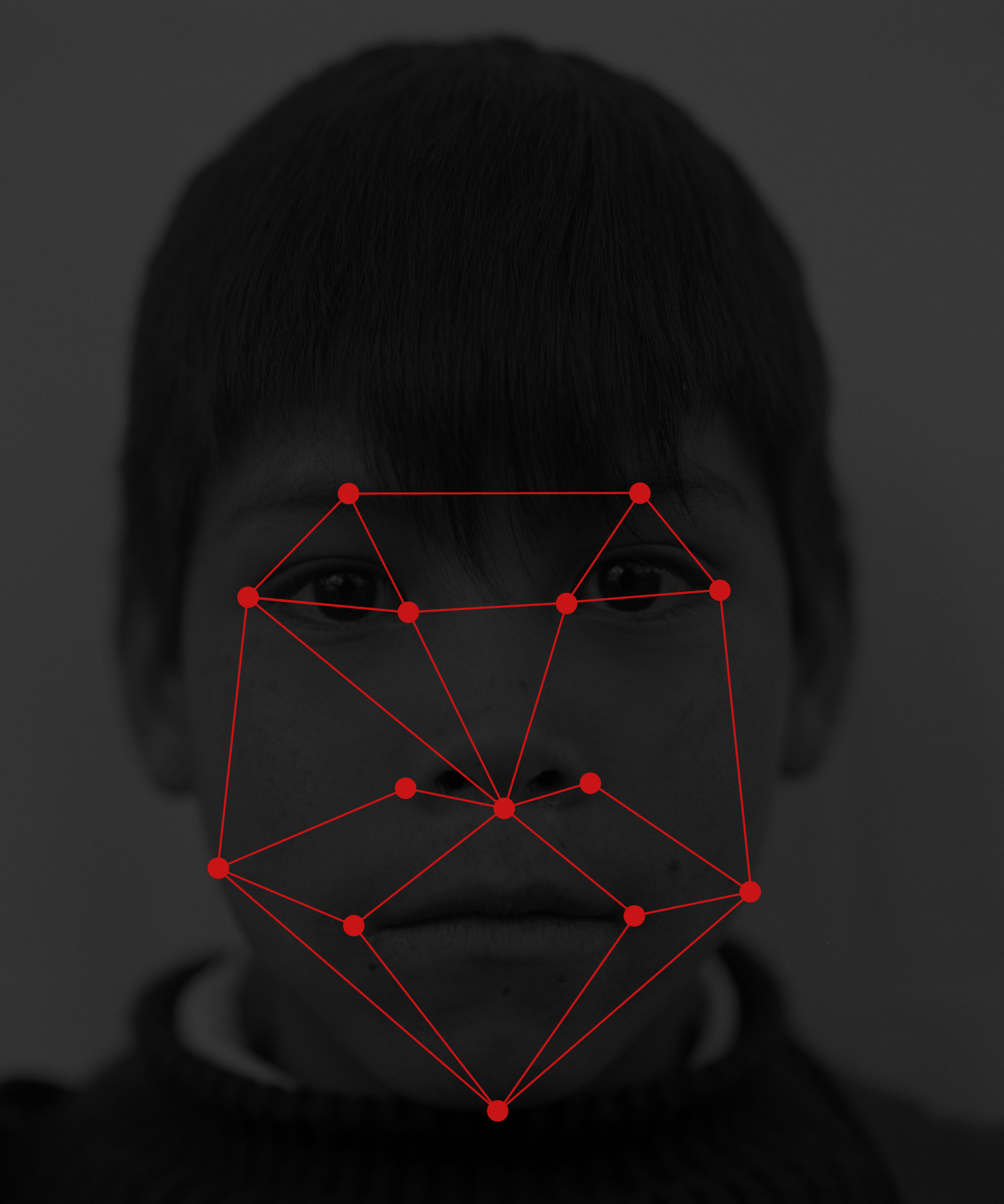

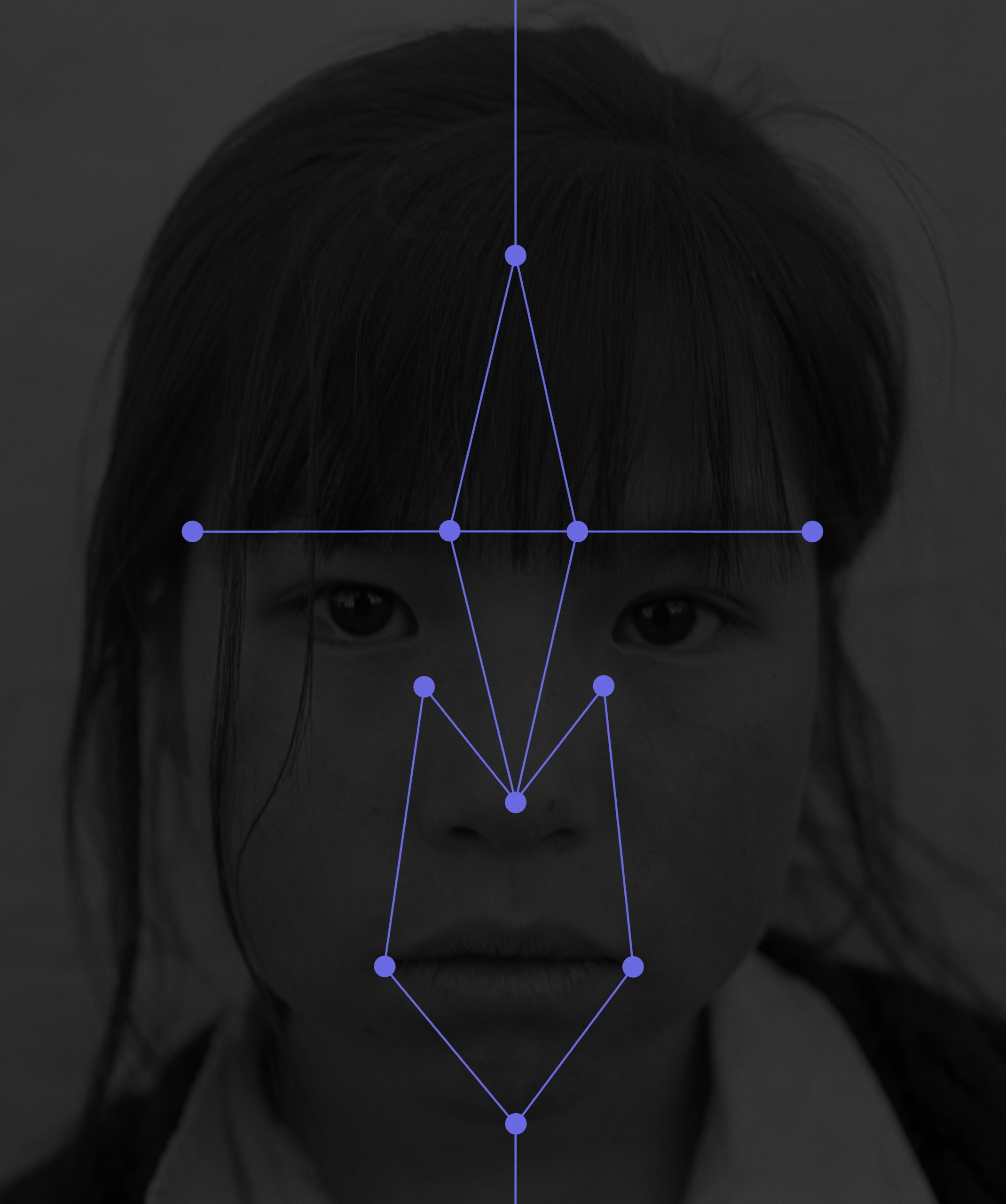

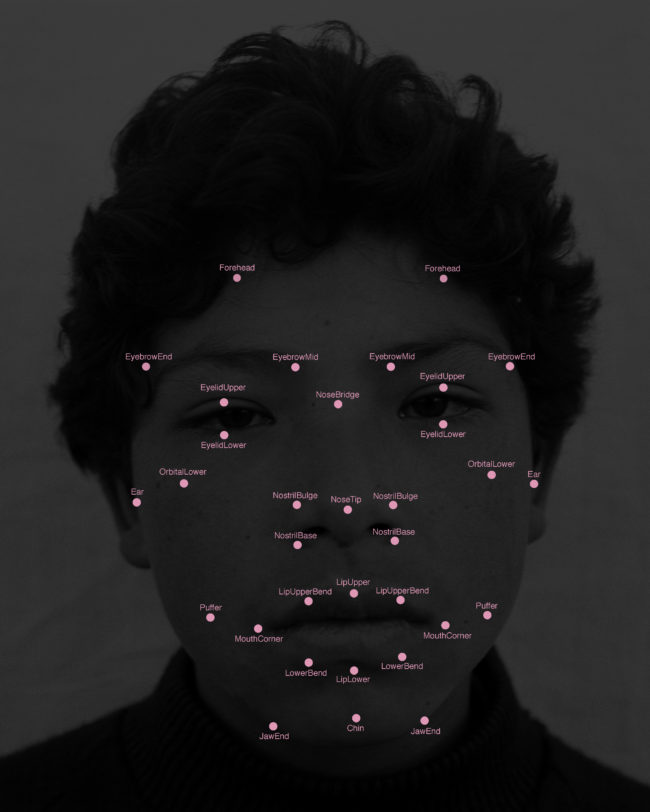

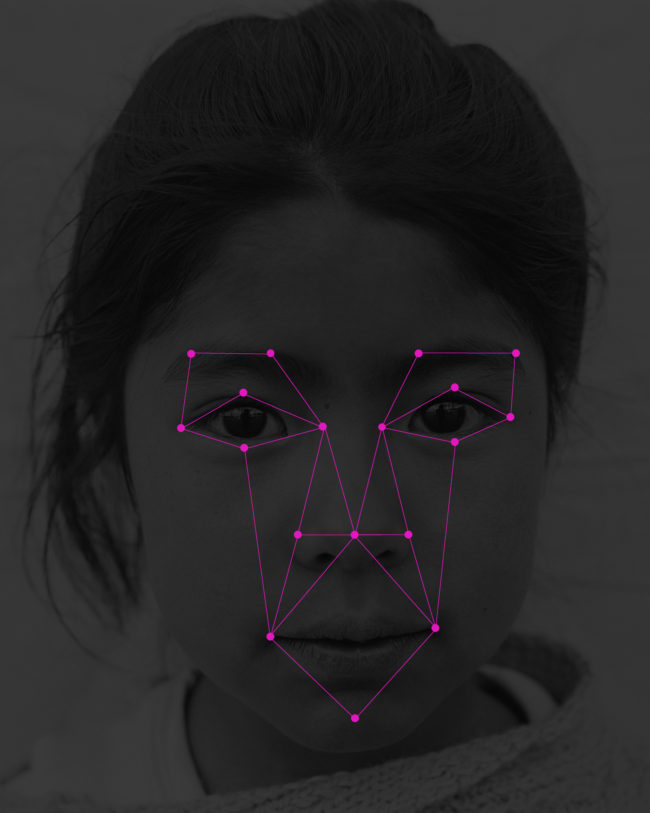

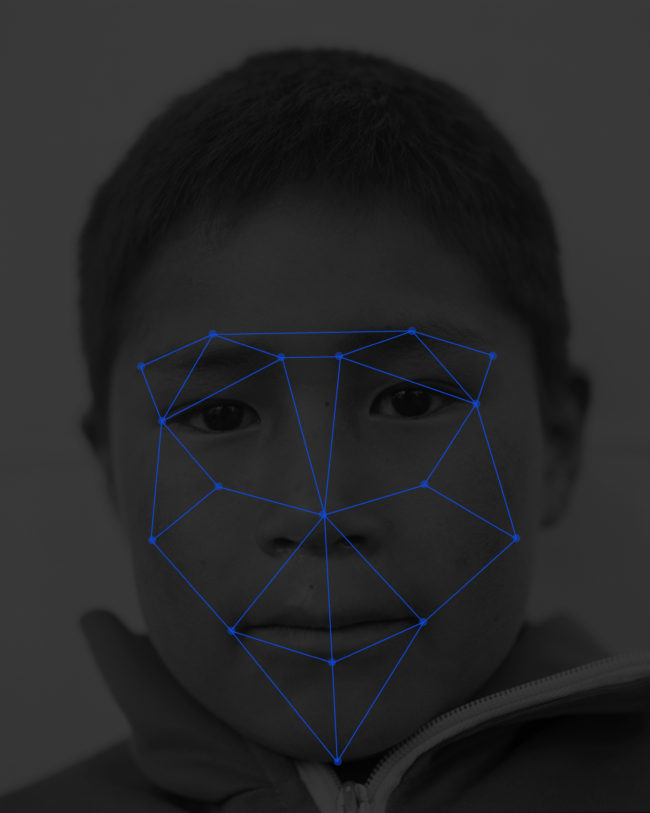

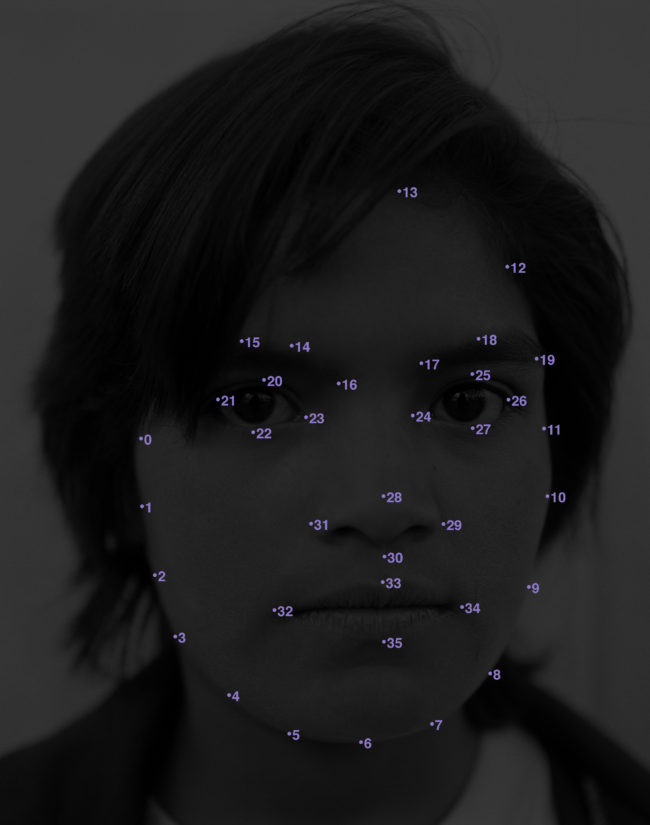

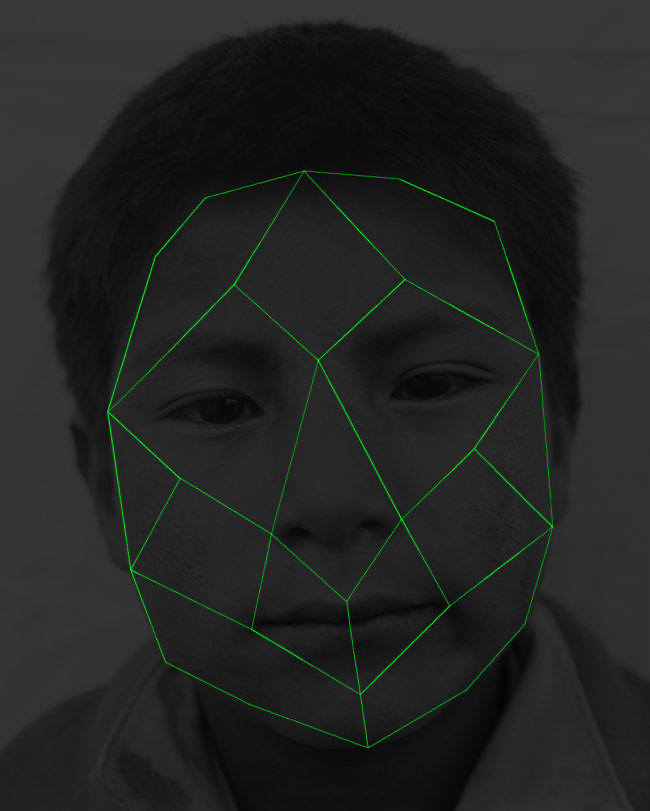

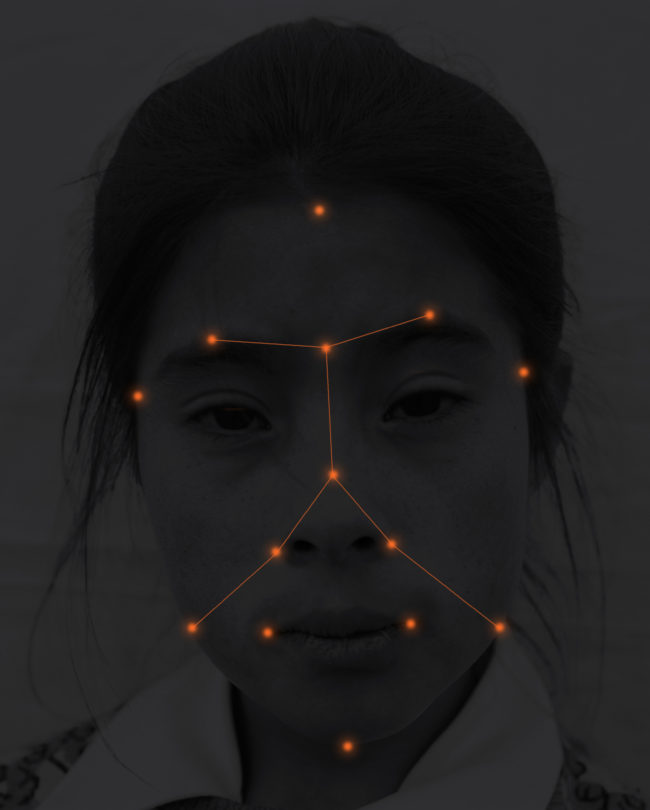

Systems and Constellations originated out of an interest in understanding the parameters of the human face, from historical XIX C theories based on physiognomy to the new biometric systems developed for facial recognition. The artist’s own condition, Prosopagnosia or ‘Face blindness’ – the impairment in the recognition of faces and facial expressions – was the starting point.
The research is based on the study of features, gestures and the mapping of the human face and how these configurations are used by surveillance industries, corporations, social media and the state.
This is a series of 10 portraits, each with a different colored biometric diagram.
Sistemas y Constelaciones se origina luego de un interés en comprender los parámetros de la cara humana, desde teorías del siglo XIX basadas en fisionomía a los nuevos sistemas biométricos desarrollados para el reconocimiento facial. La condición de la artista, Prosopagnosia o ‘Ceguera facial’- la dificultad en reconocer caras y expresiones faciales- fue el punto de partida.
La investigación esta basada en el estudio de rasgos, gestos y la cartografía de la cara humana y como estas configuraciones son usadas por industrias de vigilancia, corporaciones, social media y el estado.
La serie contiene 10 retratos, cada uno con un diferente diagrama biometric a color.
Diary of a cure for the evil eye focuses on the notion of the ‘Evil Eye’ which dates back 3,000 years to Mesopotamia, Greece and Rome. Its symbolism is recognized all over the world and it is mentioned in religions such as Judaism, Islam, Hindu, Buddhism and Christianity. The ‘evil eye’ is believed to be a look – a stare, a glance – given to an individual. This glance is mostly rooted in envy but can be at times unintentional; the ‘evil eye’ has the capacity to inflict harm, misfortune and illness.
In Latin America, specifically in Peru, the cure for this condition, known as ‘cura del huevo’, is practiced as traditional Andean medicine. The cure involves sweeping a raw chicken egg over the body of the victim to absorb the evil eye. The egg is later broken into a glass of water and examined. The shape of the yolk and the patterns of the egg whites are interpreted to diagnose the source of the affliction.
The artist followed the traditional procedure of the cura del huevo during four weeks, observing, making notes and photographing the process, as in a diary. Through research and consultations with curanderos and shamans, the results were examined. What one perceives in the shapes of the egg whites are the alleged images of the source of the evil eye.
De la Torre references the Rorschach Test and presents the Diary works in the same format. The Rorschach Test is a psychological evaluation to help assess emotional functioning and it is well known through its images of inkblots. The artist makes a parallel between the Rorschach examination and the shapes formed by the egg whites and, consequently, their interpretation. What we see in these abstract images of egg whites are a projection of our own unconscious, our fears and our imagination.
The thickness of the plexiglass over the images make them appear as if we were looking through a magnifying glass or microscope, therefore enhancing the idea of analysis and medical diagnosis.
Diario de una cura para el mal de ojo se concentra en la noción del ‘Mal de ojo’ que se remonta 3,000 años en Mesopotamia, Grecia y Roma. Su simbolismo es reconocido en todo el mundo y es mencionado en religiones tales como el Judaísmo, Islam, Hinduismo, Budismo y Catolicismo. El ‘mal de ojo’ se cree es una mirada dada por un individuo. Esta mirada esta basada en envidia pero también puede ser no intencional; el ‘mal de ojo’ tiene la capacidad de causar daño, mala fortuna y enfermedad.
En Latino América, específicamente en el Perú, la cura para esta condición, conocida como cura del huevo, es practicada como medicina tradicional andina. La cura comprende pasar un huevo crudo sobre el cuerpo de la víctima para que absorba el mal de ojo. El huevo es luego abierto en un vaso con agua y examinado. Las formas que la yema y la clara tomen son interpretadas para diagnosticar la fuente de la aflicción.
La artista siguió el proceso tradicional de la cura del huevo durante cuatro semanas, observando, tomando notas y fotografiando el proceso, como en un diario. A través de investigación y consultas con curanderos y chamanes, los resultados fueron examinados. Lo que uno percibe en las formas de la clara son las presuntas imágenes de la fuente del mal de ojo.
De la Torre referencia la prueba de Rorschach y presenta los trabajos del Diario en el mismo formato. La prueba de Rorschach es una evaluación psicológica que es conocida por sus manchas de tinta. La artista propone un paralelo entre el examen de Rorschach y los patrones formados por la clara del huevo y, consecuentemente, su interpretación. Lo que vemos en las imágenes abstractas de la clara de huevo son una proyección de nuestro propio inconsciente, nuestros miedos y nuestra imaginación.
El ancho del plexiglass sobre las imágenes hace que aparezcan como si las estuviéramos viendo a través de una lupa o microscopio, realzando la idea de análisis y diagnóstico médico.